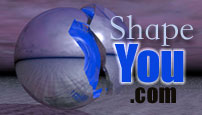|
|
|
The Pain When You Gain: Delayed Onset Muscle Soreness
by: Jon Gestl
Nothing is more frustrating than the pain and discomfort that occurs in the days that follow a workout. The common muscle soreness and stiffness experienced one to two days after a workout may be so uncomfortable, particularly to the new exerciser, that it may discourage future workout attempts. As someone once said after her first workout, "What’s the use of getting fit if I can’t even get out of bed in the morning?"
Every exerciser, regardless of experience, deals with sore and stiff muscles following a particular workout. It is important to understand why this occurs and what to do about it in order to deal with this common, although irritating, phenomenon.
Why do I feel so much pain after a workout?
The typical muscle soreness experienced in the days following a workout is referred to as Delayed Onset Muscle Soreness (DOMS) and is characterized by stiffness, pain and sometimes weakness in the exercised muscles. The soreness can last several days after a workout, with the height of the pain occurring about 48 hours following the workout activity.
Studies report that DOMS is most likely the result of microscopic damage or tearing of muscle fibers with the amount of damage correlated to the intensity, amount, and kind of exercise that occurs. DOMS is also related to an individual’s exercise history, and is most typical among those who are either starting out in an exercise program or those who change the intensity or type of exercise.
DOMS appears to be strongly affected by eccentric muscle actions. Commonly referred to as the "negative" part of an exercise, eccentric action occurs when a muscle resists while it is forced to lengthen. This action happens in movements such as descending stairs, downhill running, and landing a jump, or with the lowering movements in exercises such as squats, lunges or pushups.
Although there is no conclusive proof, researchers have suggested that DOMS may also be related to inflammation that occurs in and around a muscle. Swelling may occur following exercise, which increases pressure and causes discomfort.
But I can’t get out of bed…How do I deal with this?
Although no surefire documented method exists to entirely get rid of DOMS, some treatments may temporarily alleviate some of the discomfort, such as application of ice, ultrasound and anti-inflammatory medication (aspirin, ibuprofen). Massage may also reduce some of the symptoms, but this method has not been proven.
As the saying goes, "time heals all wounds." DOMS usually dissipates within 3 to 7 days following exercise with no special treatment. Severe pain lasting longer than this time frame may indicate an acute injury and should be treated by a medical professional.
How can I prevent this from happening again?
There is no known technique or drug that entirely prevents DOMS. However, there may be some things you can do before you exercise to keep DOMS at a minimum. Popular fitness theory suggests warming up thoroughly then gently stretching both before and after exercise. Training with your limitations in mind is always a smart idea, building intensity over time rather than attempting an all-out effort on your first try.
The good news: The best prevention is regular exercise. Studies have demonstrated that continued training acts in a preventative fashion to reduce muscle soreness. Regular endurance training, specifically, has been shown to be a method of preventing the onset of DOMS.
The typical soreness experienced after training, or DOMS, is part of the process of getting stronger and reaching your fitness goals. The best method to reduce this somewhat frustrating part of starting or modifying a fitness program is none other than consistent effort.
About The Author
Jon Gestl, CSCS, is a personal fitness trainer and instructor in Chicago specializing in in-home and in-office fitness training. He is a United States National Aerobic Champion silver and bronze medalist and world-ranked sportaerobic competitor. He can be contacted through his website at http://www.jongestl.com.
jongestl@jongestl.com |
|
|

